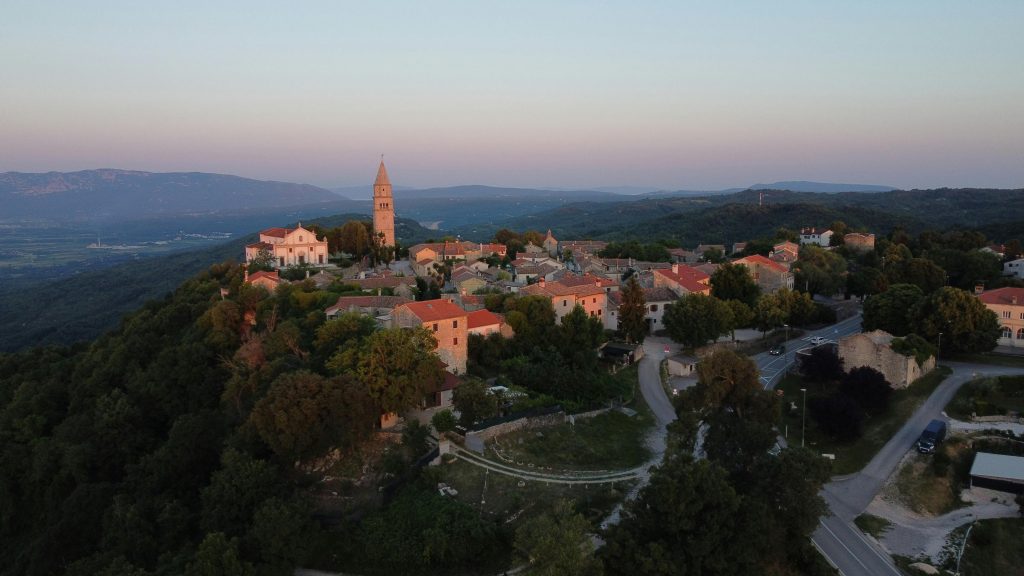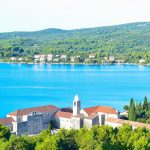March the 18th, 2024 – You’ve more than likely heard of Istrian, but how much do you know about the Istriot language? Unless you’re a linguist, probably not a great deal…
I know I’ve said it before (probably a few dozen times, actually), but for such a geographically small country, Croatia boasts a seriously impressive number of dialects, subdialects and yes, even languages in their own right as some linguists argue. We’ve explored old Dalmatian words which are unfortunately close to extinction, the main dialects which make up standard Croatian as we know it today, Shtokavian, Cakavian and Kajkavian, as well as the Dubrovnik subdialect (Ragusan), and even some much more obscure ones such as Zaratin, which was once widely spoken in and around Zadar, but is rarely heard anymore – if at all.
Many people will think of gorgeous Istria and its fairy tale hilltop towns, rolling hills and popular wine and truffles as a place in which people generally speak Croatian or Italian. After all, all the signs are bilingual, and Istria and Italy have had a… let’s say… rather complex relationship over the years. It makes sense that the Italian influence is strong in that part of Croatia, and indeed it is. But it isn’t quite that simple.
The Istriot language comes from Medieval Latin – not Croatian, Italian or Venetian…
So, back to the Istriot language, which, as I stated, is spoken by a very small number of people in southwestern Istria, mainly in Vodnjan and Rovinj and shouldn’t be confused with the Venetian ”inspired” Istrian dialect, or with Istro-Romanian. The Istriot language is something that is very much its own and draws its roots directly from medieval Latin. That doesn’t mean there aren’t arguments from linguists and other experts about what it actually is, however. The Max Planck Institute for the Science of Human History placed it in the Dalmatian Romance subgroup back in 2017, but of course, not everyone agrees, and many people (this includes multiple experts) classify it quite differently.
I should also stated that historically speaking, it was never actually referred to as the Istriot language until the 19th century, but rather by giving reference to the locations in which it is (or in some cases was) spoken. Just six towns in Istria spoke it, and they were Vodnjan (Bumbaro) and Rovinj (Rovignese), Bale (Vallese), Sisan (Sissanese), Galizana (Gallesanese) and Fazana (Fasanese).
When Istria was part of Italy, the Istriot language was deemed to merely be a Venetian subdialect, but many now consider it an independent language of its own, and for the purposes of this article, I’m going to be calling it the Istriot language. Those who consider it to be entirely independent classify it as an Italo-Dalmatian language, which many people accept it to be. Others consider it to be a Romance language influenced by Friulian, Venetian and Slavic speech. Some consider it to be an independent Northern Italian language which doesn’t belong to the Venetian language whatsoever. Others classify it as a variety of the Rhaeto-Romance languages, and Antonio Ive, an Istriot himself, believes that to be the case.
Wuth just 400 speakers – The Istriot language won’t be around much longer
So, as you can see, it’s far from simple and the fact that a mere 400 people speak it in very specific locations today doesn’t alter the fact that debates still take place over the Istiot language, its origins, or its influences. It was of course once significantly more widely spoken, and the term ”Istriot language” was, as stated, given back during the 19th century when an Italian linguist, Graziado Isaia Ascoli, first called it that. It is classed as an endangered language which is at real risk of becoming extinct very quickly, and the reason is obvious. With such a low estimated number of speakers, it won’t be long until the Istriot language enters the same history books as Zaratin went to.
Despite its endangered status, attempts have been made at trying to rescue this language from the cruel hands of time, and in order to preserve and promote the Istriot language, the Istriot Dialect Festival was organised, which has been being held every year since 2013, where other traditional Istrian items can be enjoyed, including locally made cakes.










